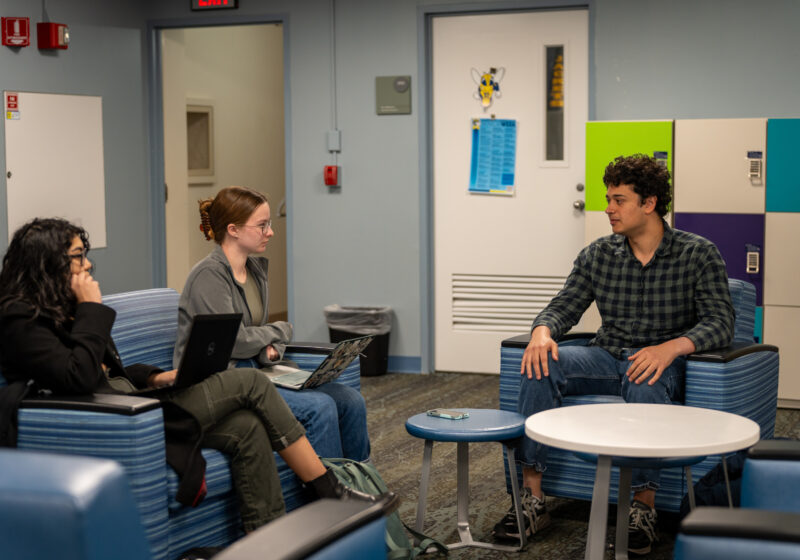Just in time for Meliora Weekend, Hartnett Gallery opened a new show that at first glance seems filled with monochromatic blue photographs of landscapes, explosions, and flowers. But walk a little closer and you realize that they are actually paintings, marked by the hand throughout. The exhibit “Blueprint Paintings” is composed of twelve recent works by alumnus Eric LoPresti, Class of 1993. These pieces explore the beauty that nature creates and the devastation that humanity inflicts upon it.
LoPresti grew up in Washington near the Hanford Nuclear Site, which was the first production site of weapons-grade plutonium used in nuclear bombs. He came of age at the end of the Cold War and attended college shortly after the fall of communism. He received a BA in Cognitive Science from the UR in 1993 and an MFA from the Maryland Institute College of Art in 2002.
“Blueprint Paintings” is titled as such because of the attempt that LoPresti makes to represent these paintings as architectural plans. Besides the monochromatic blue, all of the paintings contain handmade marks and masking tape silhouettes, recalling the look of hand-drawn designs. LoPresti also uses store-bought canvases so that each painting is a standard size, approximating the size of a floorplan.
The influence of LoPresti’s upbringing on his work is clear, especially in “Blueprint Paintings.” About half of the paintings depict declassified scenes of nuclear tests, mostly from the Nevada Test Site. Within these paintings lies a sentiment of horror at the destructive forces man has unleashed on the world. Beside these images are paintings of landscapes and flowers. To some extent, these act to balance the power of the nuclear paintings, but more often than not, it is frighteningly easy to find similarities between them.
To achieve this effect, most of the paintings are hung in pairs. One of the most striking pairs is “Craters, Nevada Test Site,” depicting two craters, and “Lewisia,” depicting two large flowers. The craters are close together and roadways are constructed all around them. The two flowers are similarly positioned close together, and the silhouette of a third flower in the corner is left blank. The comparison between nuclear craters and flowers is jarring, reminding the onlooker that devastation can come from even the most beautiful that Mother Earth has to offer.
Of course, “Spirit Lake,” depicting Mount St. Helens, is the clearest indication of nature’s power. The volcano erupted when LoPresti was a child, and in “Blueprint Paintings,” he draws a clear connection between with it and the atomic bomb.
The weakest painting in the show is “Chrysanthemum,” depicting a lone flower with masking tape lines striking it on the diagonal. In general, it is well done, but LoPresti’s handling of the brush in this case was too much like a drawing. While all of the other paintings appear as photographs from the right distance, “Chrysanthemum” never stops looking like a piece of graphic art. The lines are also distracting – no other painting contains them in such a way as to compromise the subject matter.
“Blueprint Paintings” offers an interesting view of the similarities between technology and nature. LoPresti’s painting technique is superb, tricking the eye with photographic clarity in one moment, garnering forgiveness with the handmade effects in the next. Although appealing to the eye, the underlying text of each painting is one of destruction. And the title seems to speak to that as well: blueprints for man’s own end, whether by his own hand or by that of the Earth.
“Blueprint Paintings” runs through Nov. 9.
Libbey is a member of
the class of 2016.

